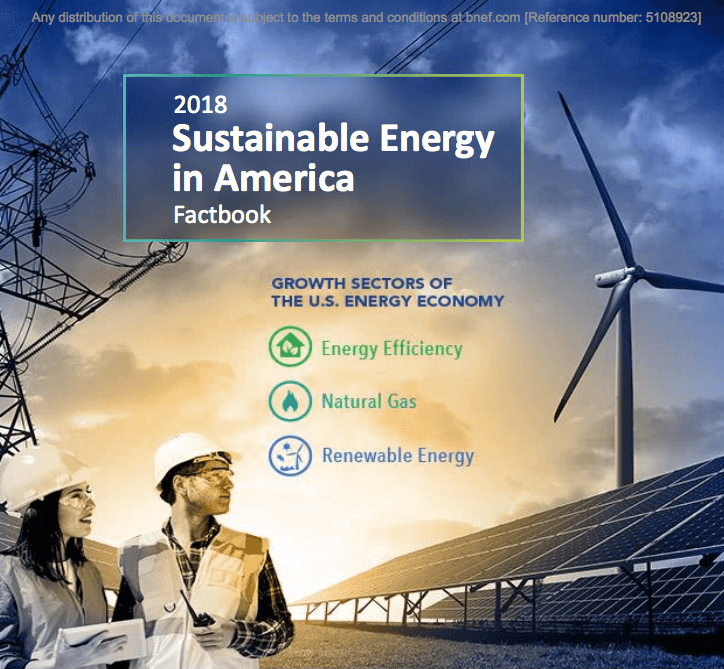Bloomberg New Energy Finance (BNEF) and the Business Council for Sustainable Energy (BCSE) have released their 2018 Sustainable Energy in America Factbook, the result of a comprehensive review of energy statistics.

Key findings in the sixth edition of the Sustainable Energy in America Factbook highlight U.S. energy trends contributing to American economic competitiveness.
Their findings? The rapid deployment of energy efficiency, natural gas, and renewable energy in 2017 generated economic benefits without requiring increases in energy consumption or greenhouse gas emissions. Over the year, the growth of sustainable energy industries contributed to greater economic competitiveness, job creation, and the expansion of the American economy.
BNEF summarizes the 2018 Factbook as follows: “The massive and historic transformation of the U.S. energy sector clicked into a higher gear in 2017, despite new policy uncertainties. Renewable deployment grew at a near-record pace, energy productivity and GDP growth both accelerated, and the U.S. became a serious player in the global liquefied natural gas market. All of this combined to squeeze U.S. greenhouse gas emissions to a 25-year low, while keeping costs in check for consumers.”
According to Lisa Jacobson, President of the BCSE, “The performance is proof that clean energy delivers for the American economy.”
Jacobson added: “The 2018 Factbook demonstrates that energy efficiency, natural gas, and renewable energy are generating jobs and cleaner air while reducing energy use and boosting the productivity of the American economy. The focus of national energy policy in 2018 and beyond should be to further enhance and promote the continued growth of these clean energy sectors.”
The 2018 Factbook is the sixth edition of an annual resource that outlines key energy trends contributing to American economic competitiveness. This year’s findings clearly demonstrate that the rise of clean energy positively impacts the American economy, energy infrastructure, and the environment.
“Sustainable energy deployment soared to record levels in 2017, cementing its role as a key contributor to U.S. energy,” says Rachel Luo, the lead BNEF author of the report. “At 18% of the power mix, renewable energy resources including hydropower are making nearly as large a contribution to U.S. electricity generation as the country’s nuclear fleet. Meanwhile, the falling price of newer technologies such as lithium-ion batteries is fueling the transformation of both the transportation and power sectors.”
Some of the key findings:
- Natural gas remained the primary source of power generation in the U.S., and wind and solar build, combined with increased hydropower generation, drove renewable generation up from 15% to 18% of the total electricity mix in one year.
- Global clean energy investment rose to $333 billion, the second-highest amount on record. U.S. investments tracked 2016 levels, at $57 billion, but saw a shift in capital deployment toward wind and energy smart technologies.
Check out more findings here, and download the full Factbook here.
Filed Under: News




